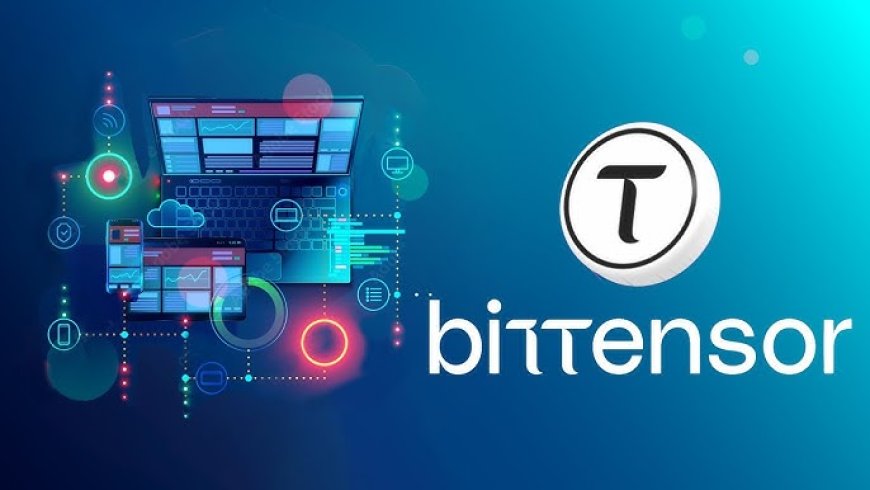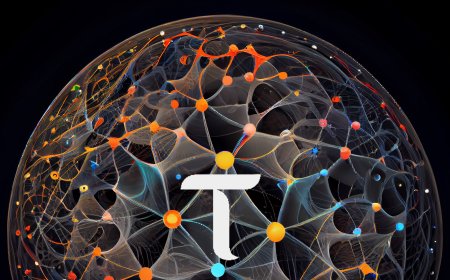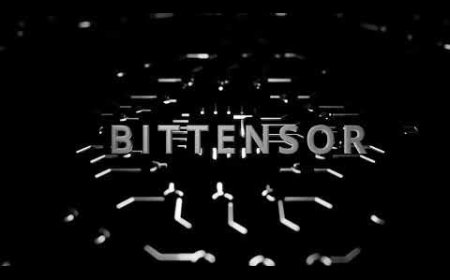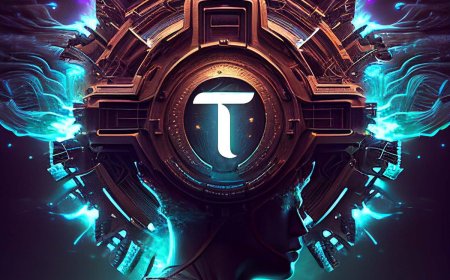Bittensor's Revolutionary dTAO Proposal: Transforming Decentralized AI Networks
Bittensor, the pioneering decentralized AI network, is on the cusp of a major evolution with its proposed dTAO (dynamic Token Allocation Optimization) system. This groundbreaking mechanism aims to revolutionize how the network allocates resources, incentivizes participants, and governs its growing ecosystem of subnets. In this comprehensive overview, we'll explore the key features of dTAO, its potential impact, and the roadmap for its implementation.

The Need for dTAO
Bittensor's current system relies on a fixed root network to allocate resources across various subnets. While effective, this approach has limitations in scalability and flexibility. The dTAO proposal addresses these issues by introducing a dynamic, market-driven mechanism for resource allocation and subnet valuation.
As the Bittensor ecosystem continues to grow, the need for a more flexible and scalable system becomes increasingly apparent. The current fixed subnet structure limits the network's ability to adapt to new AI use cases and technological advancements. dTAO aims to solve these limitations by creating a fluid, market-driven approach to resource allocation and subnet valuation.
Key Features of dTAO
- Dynamic Subnet Tokens
At the heart of dTAO is the introduction of dynamic subnet tokens. Each subnet will have its own token, tradeable against TAO (Bittensor's native token) in liquidity pools. This allows for real-time, market-driven valuation of subnets based on their perceived value and utility.
The subnet tokens serve as a representation of the value and utility of each specific subnet within the Bittensor ecosystem. By creating a direct link between a subnet's performance and its token value, dTAO incentivizes subnet owners and participants to continually improve and innovate.
- Liquidity Pools and Price Stability
dTAO utilizes UniSwap-style liquidity pools for each subnet token. These pools maintain a 1:1 peg between TAO and subnet tokens, ensuring price stability and preventing excessive speculation. As explained during the demonstration, "The prices of the dynamic tokens converge to one over time... The market cap of the subnet tokens is equivalent to the market cap of TAO, a little bit like a stablecoin."
This price stability mechanism is crucial for preventing wild fluctuations in subnet token values, which could lead to network instability and reduced user confidence. By implementing a system that naturally converges towards equilibrium, dTAO aims to create a more predictable and reliable economic environment within the Bittensor ecosystem.
- Flexible Staking Options
Users can stake their TAO directly into subnets they believe in, or remain in the root network for a more conservative approach. This flexibility allows for various levels of engagement and risk tolerance.
The introduction of flexible staking options democratizes participation in the Bittensor network. Users can now directly support subnets they believe in, potentially earning higher rewards for taking on additional risk. Conversely, more conservative users can opt to stake in the root network, sacrificing potential upside for increased stability.
- Subnet-Specific Validator Takes
Validators can now set different "take" rates (commission) for each subnet they operate in. This allows for more nuanced incentive structures and competition among validators.
This feature introduces a new level of granularity in validator economics. Validators can adjust their take rates based on the specific requirements and competitive landscape of each subnet. For example, a validator might choose to offer a lower take rate on a highly competitive subnet to attract more delegators, while maintaining higher rates on subnets where they have a competitive advantage.
- Elimination of Subnet Limits
With dTAO, Bittensor can potentially remove the current limit on the number of subnets. Instead, underperforming subnets will have slower tempos (update frequencies) or may become dormant until revived by community interest.
This removal of subnet limits opens up new possibilities for innovation within the Bittensor ecosystem. Developers and AI researchers can create specialized subnets for niche use cases without worrying about hitting an arbitrary limit. The natural selection process introduced by dTAO ensures that only valuable and active subnets will thrive, while underperforming ones naturally fade into dormancy.
- Improved Incentive Alignment
Subnet owners and participants are more directly incentivized to create value, as the price of their subnet token directly reflects market sentiment. As one participant noted, "If you have the niche net, you basically buy into it... instead of having your own validator, you can just delegate to it and get the reward for the images your rate limit produces."
This direct link between subnet performance and token value creates a powerful feedback loop. Subnet owners are incentivized to continually improve their subnet's utility and efficiency, as doing so directly impacts the value of their holdings. Similarly, users are encouraged to seek out and support the most valuable subnets, driving a virtuous cycle of innovation and value creation.
Implementation and Timeline
While the dTAO proposal is still in development, significant progress has been made:
- Working Implementation: A functional implementation of dTAO has been developed and demonstrated.
- Testing Phase: The system will undergo extensive testing on devnet and testnet before any mainnet deployment.
- Community Feedback: The Bittensor team is actively seeking community input to refine the proposal.
- Governance Vote: A formal governance vote will be held before any mainnet implementation.
The team emphasizes a cautious approach, with ample time for testing and refinement. As stated during the presentation, "We're absolutely not going to push this to mainnet without testing."
This careful, community-driven approach to implementation reflects Bittensor's commitment to decentralization and collective decision-making. By involving the community at every step of the process, from initial design to final implementation, the team aims to create a system that truly serves the needs of all participants in the ecosystem.
Technical Deep Dive
Let's explore some of the technical aspects of dTAO in more detail:
- Price Mechanism
The price of subnet tokens is determined by the ratio of reserves in their respective liquidity pools. This creates a natural equilibrium and allows for organic price discovery. The system is designed to converge prices to 1 TAO over time, preventing excessive volatility.
The use of liquidity pools for price discovery is a proven mechanism in the DeFi space. By applying this concept to subnet valuation, dTAO creates a transparent and efficient market for subnet resources. The convergence towards a 1:1 peg with TAO ensures long-term stability while still allowing for short-term price signals based on subnet performance and demand.
- Emission and Inflation
dTAO introduces a nuanced approach to emission and inflation. When subnet token prices are above the 1:1 peg, TAO inflation into that subnet's pool is halted. This mechanism helps maintain price stability and incentivizes efficient resource allocation.
This dynamic emission system serves multiple purposes. First, it helps maintain the price peg by adjusting supply based on demand. Second, it creates an incentive for subnet participants to maintain a balance between value creation and token price. If a subnet token's price rises too high, the reduction in new emissions encourages participants to seek opportunities in other, potentially undervalued subnets.
- Slippage and Liquidity
Large trades may experience slippage due to the nature of the liquidity pools. However, as the system matures and liquidity deepens, slippage is expected to decrease significantly. As explained, "Over the next 5 million TAO will go into the pools, and... because of that, there's a huge amount of volume and therefore a lot less slippage."
The issue of slippage is a common concern in liquidity pool-based systems. However, the dTAO design aims to mitigate this through several mechanisms. The gradual injection of liquidity over time, coupled with the natural incentives for market participants to provide liquidity, should result in deep, efficient pools for most active subnets.
- Staking and Delegation
Users can stake their TAO into specific subnets or delegate to validators. The system allows for subnet-specific delegation, enabling users to support particular projects or validators within the ecosystem.
This granular approach to staking and delegation gives users unprecedented control over their participation in the Bittensor network. Users can create diverse "portfolios" of subnet stakes, balancing risk and reward across different AI use cases and technologies. This flexibility should lead to more efficient resource allocation across the network as a whole.
- Governance and Parameter Adjustment
While many aspects of dTAO are algorithmically determined, there's still room for governance. The community can vote on key parameters and potentially adjust things like emission rates or pool mechanics if needed.
The inclusion of governance mechanisms ensures that the dTAO system can evolve over time to meet the changing needs of the Bittensor ecosystem. This adaptability is crucial for the long-term success and relevance of the network in the fast-paced world of AI and blockchain technology.

Potential Impact and Benefits
The introduction of dTAO could have far-reaching consequences for the Bittensor ecosystem:
- Enhanced Decentralization: By allowing all participants to influence subnet valuation, dTAO furthers Bittensor's commitment to decentralization. This increased decentralization could lead to a more robust and resilient network, less susceptible to single points of failure or centralized control.
- Improved Resource Allocation: Market-driven pricing should lead to more efficient allocation of network resources to valuable subnets. This dynamic allocation ensures that the most innovative and useful AI services receive the computational resources they need to thrive and scale.
- Increased Flexibility for Subnet Creation: Removing subnet limits could spur innovation and allow for more specialized AI services within the network. This could lead to a proliferation of niche AI applications, driving innovation and expanding the utility of the Bittensor network.
- Better Alignment of Incentives: Subnet owners, validators, and users all have clearer, more direct incentives to create and support valuable services. This alignment of incentives should drive rapid innovation and improvement across the entire ecosystem.
- Enhanced Liquidity and Price Discovery: The introduction of subnet tokens and liquidity pools creates new opportunities for price discovery and potentially attracts more liquidity to the ecosystem. This increased liquidity could make Bittensor more attractive to both AI developers and crypto investors, driving growth and adoption.
- Scalability: The dynamic nature of dTAO allows the Bittensor network to scale more effectively, accommodating growth in both the number and complexity of AI services offered.
- Reduced Barriers to Entry: By allowing users to stake directly into subnets without running their own validators, dTAO lowers the barriers to entry for participation in the network. This could lead to a more diverse and engaged user base.
Challenges and Considerations
While dTAO offers numerous benefits, there are also challenges to consider:
- Complexity: The system introduces new concepts and mechanics that may be challenging for some users to understand initially. This complexity could potentially deter some users from fully participating in the ecosystem.
- Potential for Manipulation: As with any market-driven system, there's a risk of attempted manipulation or gaming. The team is actively working on mitigation strategies, but ongoing vigilance will be required to ensure the integrity of the system.
- Transition Period: Moving from the current system to dTAO will require careful management to ensure a smooth transition for all participants. This includes considerations for existing stake, validator setups, and subnet operations.
- Regulatory Considerations: The introduction of multiple tradeable tokens within the ecosystem may have regulatory implications that need to be carefully evaluated. The team will need to work closely with legal experts to navigate this complex landscape.
- Educational Challenges: Educating the community about the new system and its implications will be crucial for its success. This will require significant resources and effort from both the core team and community leaders.
- Technical Risks: As with any major system upgrade, there are inherent technical risks. Rigorous testing and auditing will be necessary to minimize these risks.
- Balancing Act: Maintaining the delicate balance between price stability and market-driven valuation will be an ongoing challenge. The system may require fine-tuning and adjustments as it matures.
Community Reaction and Next Steps
Initial community reaction to the dTAO proposal has been largely positive, with many recognizing its potential to address current limitations and drive the network forward. However, there are also calls for caution and thorough testing.
The Bittensor team has outlined the following next steps:
- Release of Technical Documentation: Detailed papers and documentation explaining the mechanics of dTAO will be published. This will allow for deeper community understanding and scrutiny of the proposed system.
- Expanded Testing: The system will undergo rigorous testing on devnet and testnet, with opportunities for community participation. This phase will be crucial for identifying and addressing any issues before mainnet deployment.
- Simulation and Economic Analysis: Extensive simulations will be run to model various scenarios and potential outcomes. These simulations will help refine the system parameters and identify potential edge cases or vulnerabilities.
- Community Workshops and Education: Initiatives to help the community understand and engage with the new system will be launched. This may include webinars, tutorials, and interactive demonstrations.
- Governance Proposal: A formal governance proposal will be submitted for community vote before any mainnet implementation. This ensures that the final decision to implement dTAO rests with the Bittensor community as a whole.
- Gradual Rollout Plan: Assuming community approval, a phased rollout plan will be developed to ensure a smooth transition from the current system to dTAO.
- Ongoing Monitoring and Adjustment: Post-implementation, the team will closely monitor the system's performance and be prepared to make adjustments as necessary based on real-world data and community feedback.
Conclusion
The dTAO proposal represents a significant evolution for Bittensor, potentially addressing key limitations of the current system while introducing new mechanisms for value creation and resource allocation. By leveraging market dynamics and creating a more flexible, scalable architecture, dTAO could pave the way for Bittensor to become an even more powerful platform for decentralized AI.
As the proposal moves through testing and refinement stages, close collaboration between the core team and the broader Bittensor community will be crucial. The success of dTAO could not only enhance Bittensor's position in the decentralized AI space but also provide valuable insights for the broader blockchain and AI communities.
The introduction of dTAO marks a bold step forward in the quest to create a truly decentralized, market-driven AI ecosystem. By aligning incentives, improving resource allocation, and creating new opportunities for participation, dTAO has the potential to accelerate innovation in the field of AI while maintaining the core principles of decentralization and community governance.
For developers, AI researchers, and blockchain enthusiasts, the evolution of Bittensor and the introduction of systems like dTAO offer exciting opportunities to engage with cutting-edge technology at the intersection of AI and decentralized systems. As the project progresses, staying informed and participating in the ongoing discussions and testing phases will be key for anyone looking to leverage or contribute to this groundbreaking platform.
The journey towards implementing dTAO is just beginning, and its success will ultimately depend on the collective efforts of the entire Bittensor community. As we move forward, the potential for creating a more efficient, innovative, and decentralized AI ecosystem has never been greater. The future of Bittensor, powered by dTAO, promises to be an exciting and transformative chapter in the ongoing story of decentralized artificial intelligence.
Source : @Opentensor Foundation
















